June 2022 - You are accessing an old version of our website. The SDGs Voluntary Commitments have been migrated here: https://sdgs.un.org/partnerships
You will be redirected to the new Partnership Platform in 10 seconds.
June 2022 - You are accessing an old version of our website. The SDGs Voluntary Commitments have been migrated here: https://sdgs.un.org/partnerships
You will be redirected to the new Partnership Platform in 10 seconds.
Created in 2015 by the NYC Mayor’s Office for International Affairs (IA), NYC Junior Ambassadors (NYCJA) leverages the United Nations as a resource for seventh graders and empowers students and educators across the five boroughs to become actively engaged with the UN and its mission of addressing some of the most pressing challenges in the world. The program uses the Sustainable Development Goals (SDGs) as the framework through which youth and educators understand challenges facing their communities and the world. NYCJA has served over 2,000 youth and educators. The program also has a robust alumni network.
In many communities around the world, youth are seen as the leaders of tomorrow not those of today. They are often excluded from decision making and not provided the right support to create change in their lives. These young people are also exposed to messages promoting exclusion over inclusion.
Mayor Bill de Blasio’s administration and particularly our office have been at the forefront of combating these harmful messages while reinforcing the values of equity, inclusion, and sustainability. We’ve worked over the past 5 years to develop initiatives and programs that create strong links between the UN and New Yorkers as a way of highlighting the value of localizing action and the benefits of diversity and cooperation. Finally, we have strived to equip young New Yorkers with the tools to be leaders of today and tomorrow.
NYCJA targets New York City 7th graders at a critical time in their personal and intellectual growth and seeks to help them understand the real connections between themselves, their communities, and the world. In order to ensure equity of access, the application is geared toward educators in schools (public, private, charter), after-school and non-profit programs. This ensures that youth, regardless of their socio-economic backgrounds are able to benefit from the program. Particularly, it ensures the inclusion of youth with special needs and those that stem from low-income households or are new English language learners.
The final cohort of 20 classrooms is chosen by a Selection Committee comprised of local and global leaders. Educators in the program are required to include the United Nations and the Sustainable Development Goals in their classroom/afterschool curriculum. The specific SDG/topic is chosen at the discretion of the educator and builds on the interest of the 7th graders.
The NYC Junior Ambassadors has 5 key objectives:
1. Engage NYC youth with the United Nations Headquarters and the work of the UN through the SDGs
2. Increase the knowledge and understanding of the United Nations/SDGs among participants
3. Increase the capacity of educators to teach about the United Nations/SDGs
4. Increase members of the UN community exposure to and engagement with NYC
5. Build strong local and international partnerships to empower NYC youth
The program transforms the way that people, especially youth, are able to connect their lives and experiences to the SDGs. Though the Member States agreed to the SDGs, the Global Goals belong to the people. NYCJA gives New Yorkers the capacity to identify ways they can take local actions to make a global impact. The program promotes inter-generational conversations about the importance of the UN and SDGs in households across NYC.
NYCJA is made possible through partnerships with the United Nations, the NYC Department of Education, the NYC Department of Youth and Community Development and the United Nations Foundation. Our office also works with key collaborators in the program including UNICEF and WE. In addition, we work with other local and global entities to give youth platforms to express their views and ways they are working to achieve the SDGs. Finally, we collaborate with various Missions/UN Departments to secure the participation of Permanent Representatives and senior UN officials in classroom visits.
Each NYCJA cycle runs for approximately six to seven months. We use quantitative and qualitative mechanisms to measure the success of the program including the number of people reached, level of knowledge about the UN/SDGs, and the impact of actions.
Most educators accepted in the program are teaching about the UN/SDGs for the first time. As such, the Mayor’s Office for International Affairs offers professional development opportunities and helps strengthen educators’ strategies for teaching about the UN/SDGs. Specifically, at the first educator meeting, NYCJA program partners led sessions to discuss teaching resources available to educators. We also provide each educator with a resource binder customized based on curricular/SDG of focus. We give broad discretion to educators and their students in determining how to incorporate the UN and SDGs into their chosen curriculum. On average, students are engaged in learning in the classroom on a weekly basis.
Through a partnership with the UN, each classroom takes part in a curated and guided visit of the UN Headquarters. There are two key goals associated with these visits. The first goal is to give youth and educators an opportunity to visit a site of importance to NYC and the world. The second goal is to engage with experts on the SDG/issue they have learned about in their classrooms through an hour-long briefing. Classrooms also receive school visits from senior United Nations diplomats who engage students on their role and the classroom’s curricular area of interest. These visits create an opportunity for international dignitaries to visit New York City schools and to build a connection with the school community. Finally, youth have the opportunity to share their experiences and the knowledge acquired in the program through a final group project. This project is showcased at a year-end event celebration where youth also receive certificates of participation. The year-end event is an opportunity for NYC youth, educators, and members of their community to interact with local and international leaders. The majority of NYCJA youth proceed to also teach other students in their school about the SDGs through peer to peer engagement.
As stated above, the NYCJA program also engages UN community members at various levels and helps build closer connections to NYC. Through curated and guided tours of the United Nations, UN tour guides and UN SDG subject matter experts participate in exchanges with NYC students and educators, learning about topics that interest them. Through the classroom visits, senior UN diplomats and their staff visit different parts of NYC and engage with NYC schools around the SDGs. As participants in NYCJA, Ambassadors and their staff travel to outer boroughs and to neighborhoods they have never visited before. They meet with numerous school administrators and learn about the operation of NYC schools. Ambassadors also have the opportunity to take tours of the schools and review the SDG learning taking place in the classroom. Other senior UN diplomats have also hosted program participants in their Mission.
The NYC Junior Ambassadors program has been extremely successful since its launch in 2015. The program continues to achieve all stated objectives. Over 2,000 youth and educators have directly learned about the United Nations and its work through the SDGs. Thousands of additional youth and New Yorkers have been impacted indirectly through peer to peer learning and campaigns by our office and the students. Our participants have also welcomed senior diplomatic representatives in their classrooms from over 30 countries.
In the Bronx, a group of Junior Ambassadors organized a gender carnival in their school to teach hundreds of their peers about SDG 5 and the importance of promoting gender equity. In Brooklyn, our students drew art and created murals to raise awareness about climate action. In Manhattan, another group worked on SDG 2 and promoted healthy eating for people who benefit from government programs such as SNAP. The cohorts of NYC Junior Ambassadors over the years have also organized walks, fundraisers, and other events to benefit causes in their communities and around the world. For example, they raised funds for UNICEF. Our NYCJA educators have also received awards celebrating their work to teach about the UN and the SDGs. Finally, our youth participate at high-level events to share the importance of youth voices and to raise awareness about the SDGs. Last summer, students from Brooklyn were invited to the UN SG’s historic speech on climate action where they shared their art. Finally, our office developed an NYCJA campaign that was posted at LinkNYC kiosks across the city thereby amplifying the program and the SDGs to New Yorkers.
The program has helped youth develop their self-concept and identity as global citizens. Educators reported that their students felt more connected to the world because they understood their power to resolve key issues. Participation in the program was also integral to helping youth develop a sense of responsibility for their wellbeing, those of their communities and the world in general. Educators in the program report feeling empowered to engage their administrators in continuing to teach about the UN/SDGs beyond the program. They also mentioned that they became more dedicated to global citizenship because they saw the growth and complexity in the thinking of their students. NYCJA also helps partners fulfill their mandate toward youth and the SDGs. It provides partners with access to NYC youth and educators. The program also gives them visibility in terms of ensuring New Yorkers are aware of their work toward achieving the SDGs. Many Ambassadors have continued to engage with the program because it enables them to better understand NYC’s efforts to localize the SDGs.
This year, we are working with a new cohort of nearly 600 youth and educators. We also continue to leverage our alumni network by providing opportunities for engagement around the SDGs through partners such as UNICEF and the UN Department of Global Communications. Finally, we share best practices with cities and organizations interested in implementing their own versions of NYCJA.
NYC is home to the UN headquarters and the largest diplomatic community in the world. The city is also one of the most diverse in the world. As such, our office recognizes the importance of promoting diversity, inclusion, and global citizenship. We also know that the success of the Global Goals requires actions from all stakeholders.
NYCJA is a program that is cost effective. We use existing staff lines to operate the program. Due to the limited budget, we identified key partners that could help us achieve our objectives by providing the services and tools needed.
The partnership of the United Nations is critical to implementing the guided and curated tours of the UN campus. Staff members in the United Nations Department of Global Communications develop a calendar for the visits and identify speakers for each briefing. They also help to find UN-related tools for inclusion in the educator resource binders. Additionally, they attend the educator meetings and provide training for educators on engaging their youth around the UN/SDGs. The NYC Department of Education (DOE) provides access to NYC youth and educators and helps to amplify the call for applications through postings in various educator newsletters. The Chancellor of the DOE also serves on the NYCJA Selection Committee. Members of the DOE also provide guidance on various issues including transportation to the UN for the guided tours and to the year-end event. The NYC Department of Youth & Community Development (DYCD) provides support during the application outreach process. They target their outreach to afterschool programs and post the call for applications on their website and social media platforms. Commissioner Bill Chong actively serves on the Selection Committee. Finally, the United Nations Foundation (UNF) identifies customized tools for educators. Ms. Kathy Calvin, President of UNF, serves on the NYCJA Selection Committee.
As the program has continued to evolve, our office also built partnerships with various UN and local entities. The UN SDG Action Campaign provided opportunities for students to use their virtual reality masks to learn about the Syrian refugee crisis and SDG 16. The UN Department of Economic and Social Affairs partnered to exhibit the final projects of two NYCJA students at the United Nations during the meeting of the UN High-Level Political Forum in July 2016. These students also met with the Prime Minister of Norway and the Vice President of Vietnam. At the local level, collaboration with community organizations, school officials and the offices of NYC elected officials – including NYC Council Members and Borough Presidents – has been critical to spreading information about the program and the SDGs during the application process.
Youth engagement in the SDGs is critical. Our office has proven through NYC Junior Ambassadors that cities can be important partners to the UN in mobilizing people around the SDGs. NYCJA is sustainable and replicable because it’s a program that is cost effective. The tools we use are easily accessible and the partnerships we’ve built can be replicated by other cities.
At the inception of NYCJA, our office focused on 7th graders experience with the UN and the SDGs. Though this focus is still a priority, the program has evolved into an experience for all stakeholders. NYCJA has fostered a community of people that are deeply committed to the SDGs because they’ve seen through our program the direct impact of their actions. The program has continued to grow with the youth and educators. Our original cohort of students is now in high school. Yet, they continue to work on the SDGs and to advocate for their issues. Some educators have also relocated to different schools and continued teaching about the SDGs and the UN thereby opening the program to new audiences.
NYCJA will continue to grow with our participants thereby multiplying and sustaining our impact.
We have shared the best practices we’ve learned with partners and external stakeholders interested in replicating our program. Because the program is rooted in service learning and driven by the students and educators, cities and national government can easily implement it. We are in continuous conversations with partners to leverage technology for these efforts. For example, we are open to connecting schools internationally to our classrooms to promote a global conversation on the SDGs. The workbooks we’ve developed for the program can also be translated and used by educators worldwide.
NYCJA is in its fourth cohort year and our office continues to demonstrate the power people can have in achieving the SDGs. The Mayor’s Office for International Affairs will continue to innovate with the program. Demand for NYCJA is still high because more people have learned about the program. NYCJA successfully deepens youth and educators’ knowledge of the UN/SDGs by facilitating their learning and engagements. Program participants become “specialists” on the SDGs while also building a strong foundational understanding of the UN, therefore providing them with the basic tools for understanding international affairs.
NYCJA can serve as a strong model. The program mobilized various local and global stakeholder groups in order to promote all 17 Goals. We will continue the simple application process in order to foster diversity in participants. Being selected for this award will help us share our best practices more widely. It will also help us continue creating platforms for our participants to create change. Finally, our selection will show to other cities that engaging people in the SDGs does not require millions in funding; it simply requires creative use of available resources and partnerships.
We hope you will select us and join us in creating global diplomats, locally!
Program website: nyc.gov/nycja
Mayor de Blasio and International Commissioner Abeywardena Announce New Participants Selected for the NYC Junior Ambassadors Program, November 20, 2018
Over 500 Seventh-grade Students Graduate From 2017-2018 NYC Junior Ambassadors Program At Historic Queens Museum, June 18, 2018
NYC Junior Ambassadors Program Educators Win Excellence in Education Awards, April 9, 2018
5 Middle School Girls Explain How Young People Can Change the World, October 12, 2017, Teen Vogue
Support Girls’ Empowerment Today, October 10, 2017, United Nations Medium
India's ambassador to UN visits Bronx students, June 5, 2017, New 12 The Bronx
Creating global diplomats, locally, April 9, 2017, United Nations Medium
Queens Students Learn to Think from an International Perspective, March 9, 2017, NY 1 News
Bronx school starts 'Pledge For Peace' campaign, April 3, 2017, Bronx Times
U.N. Ambassador Visits Staten Island School, June 1, 2016, NY1 Staten Island
Mayor Bill de Blasio Announces Inaugural Student Cohort of NYC Junior Ambassadors, January 29, 2016
My Wish On World Children’s Day: https://medium.com/@globalnyc/my-wish-on-world-childrens-day-3b947a5eb49e
NYCJA educators on Medium: https://medium.com/@globalnyc/from-the-global-stage-to-the-classroom-local-educators-reflect-on-nyc-junior-ambassadors-program-f5b5456c241



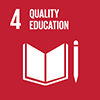
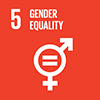
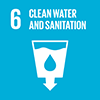
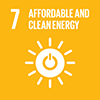

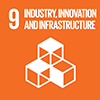
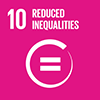



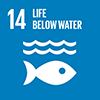

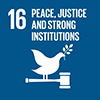
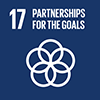
 Start: 01 January, 2015
Start: 01 January, 2015 Completion: 01 January, 0001
Completion: 01 January, 0001